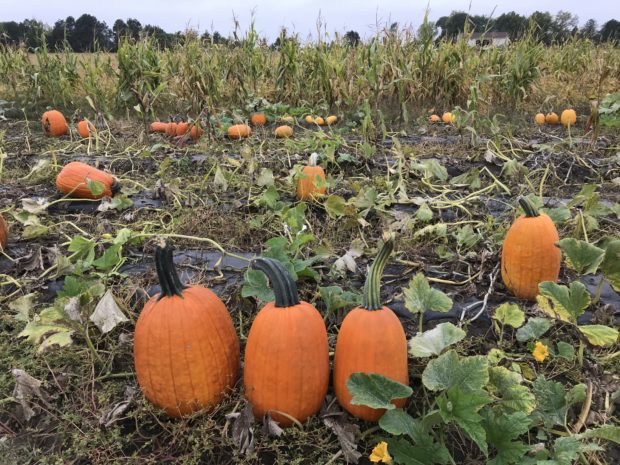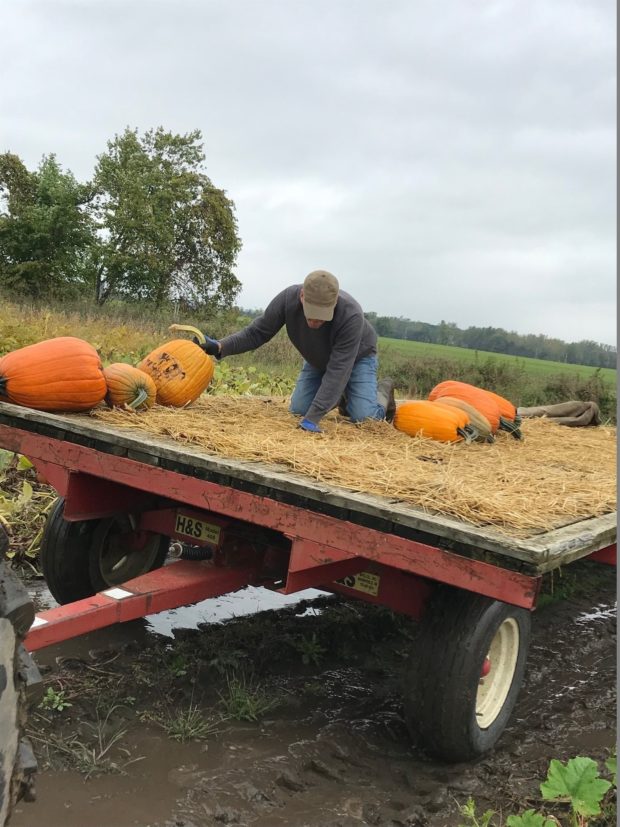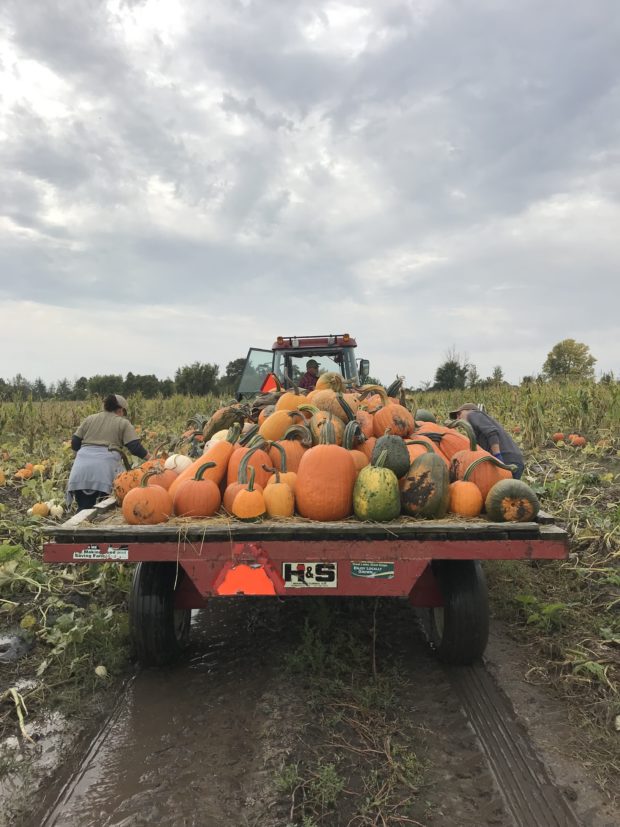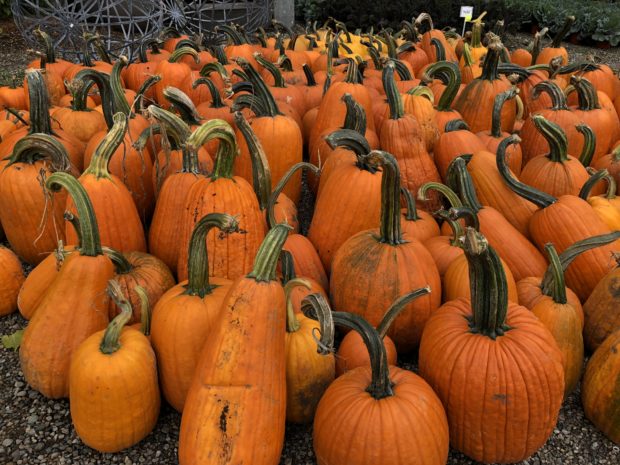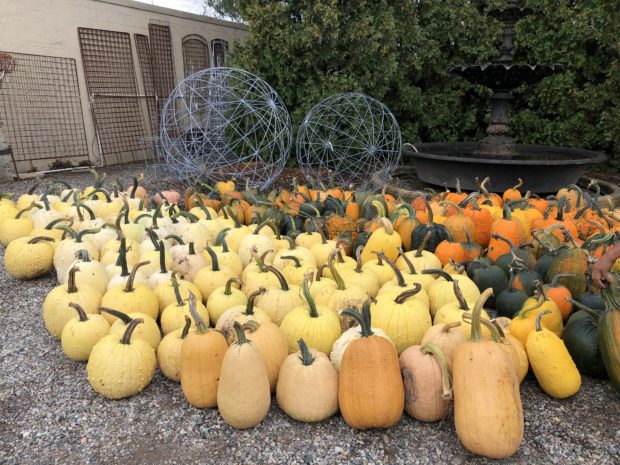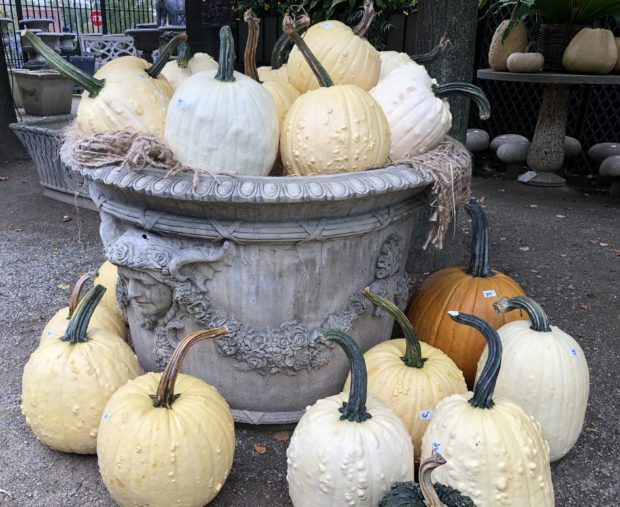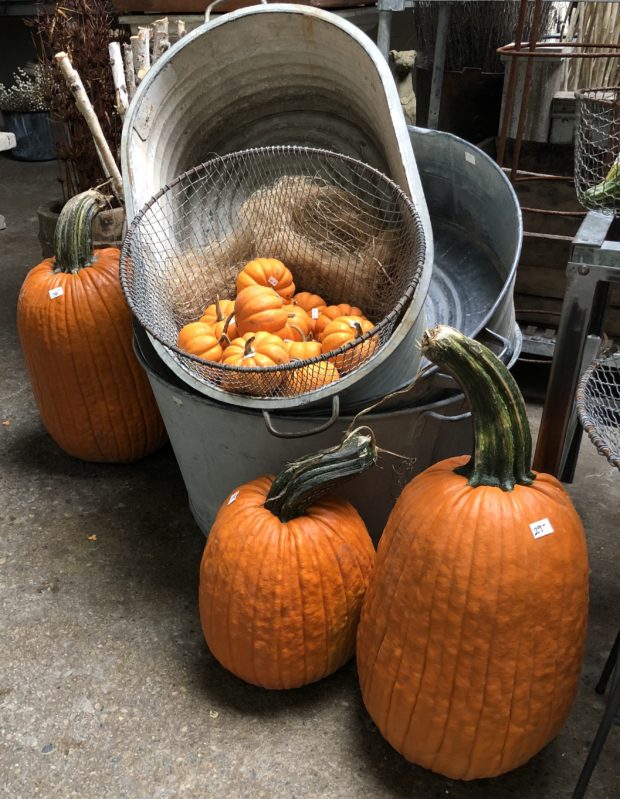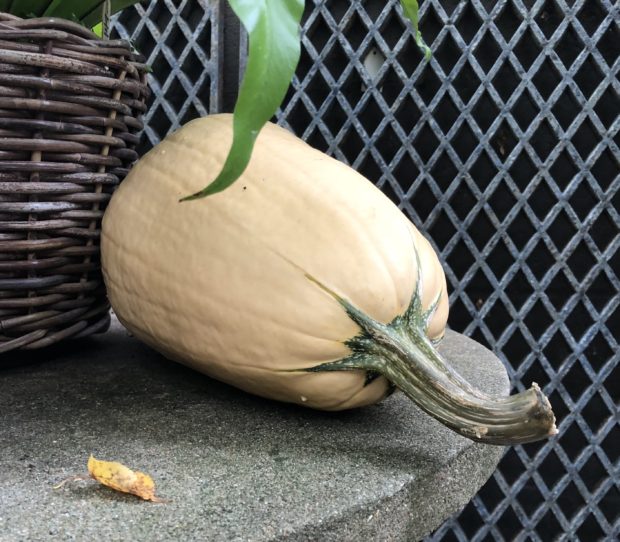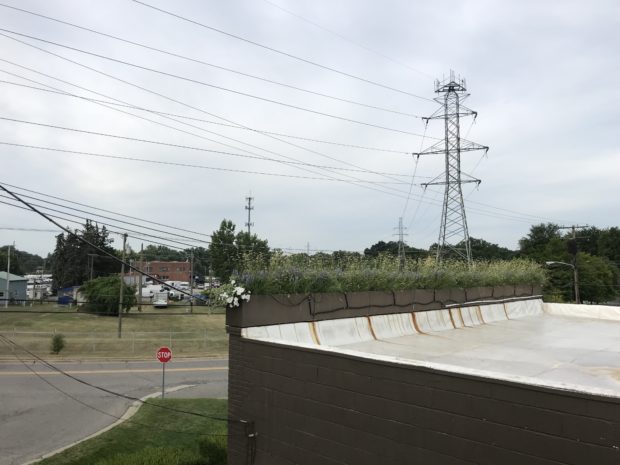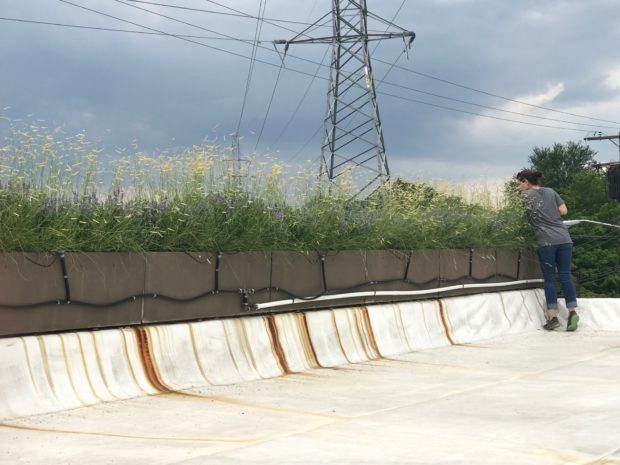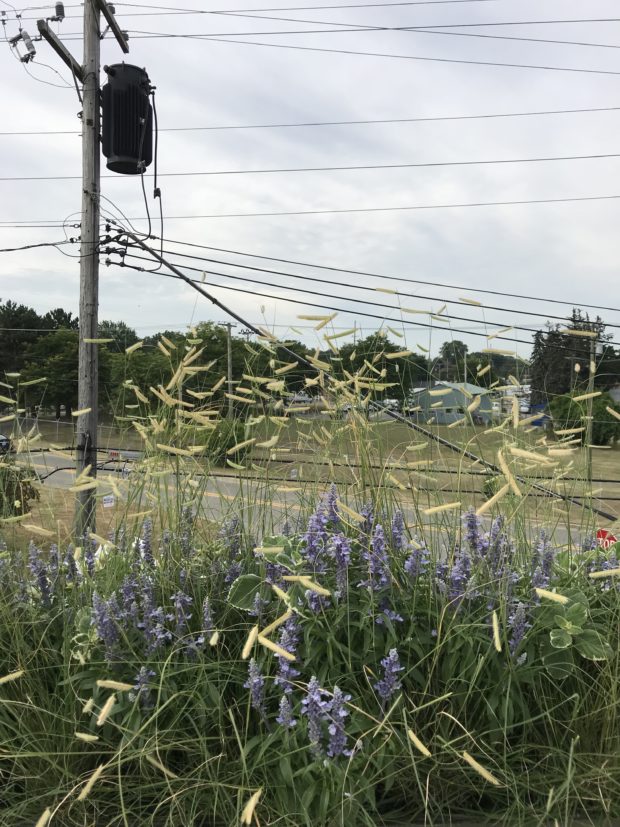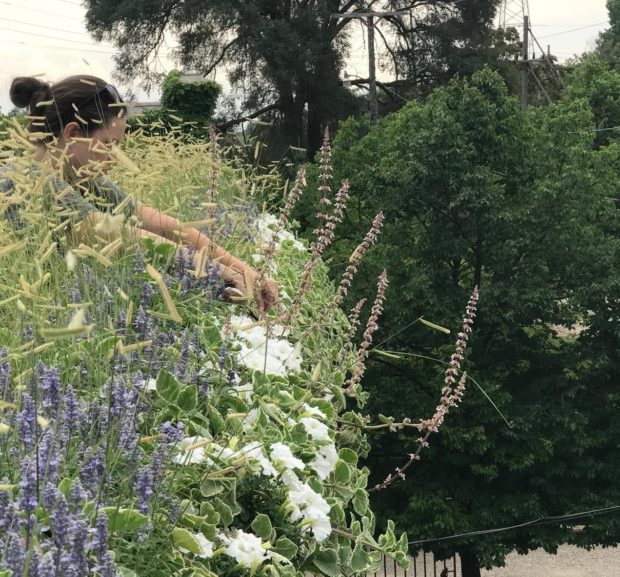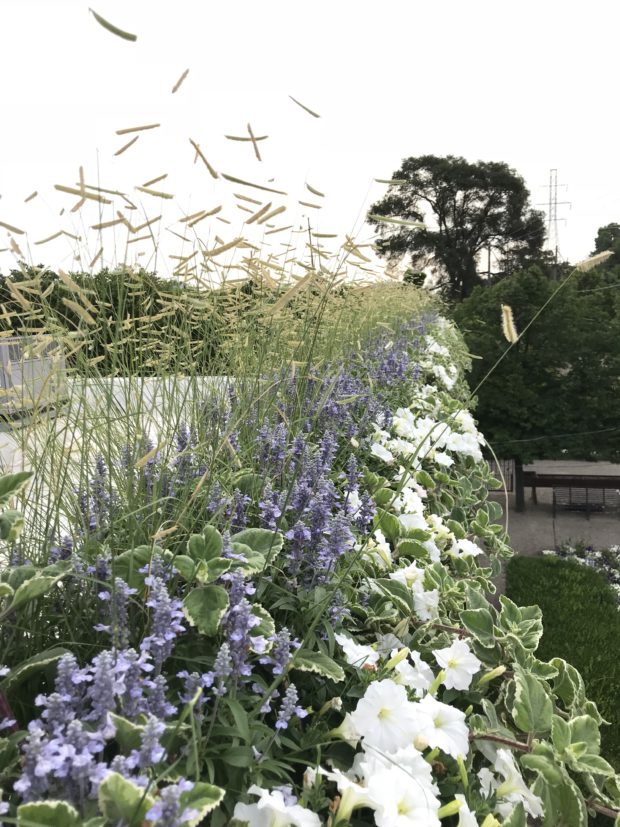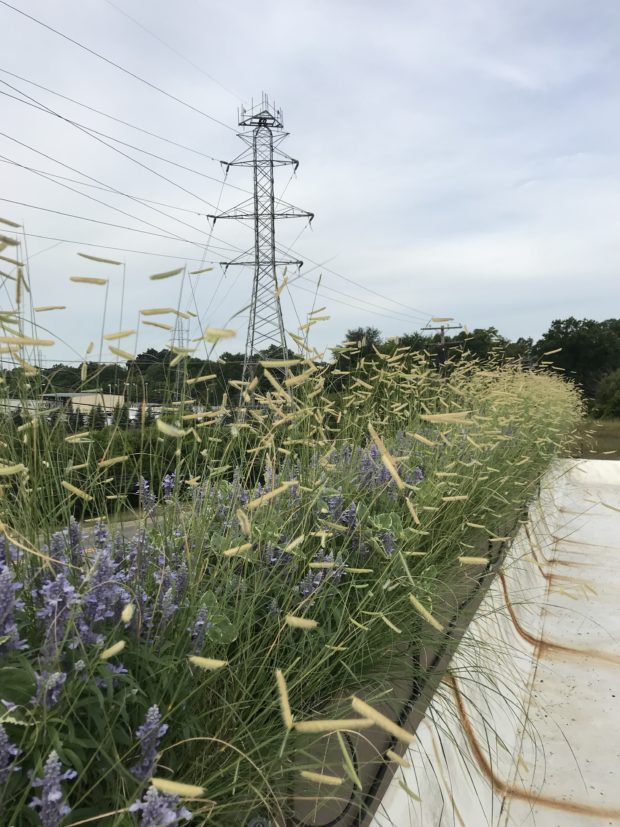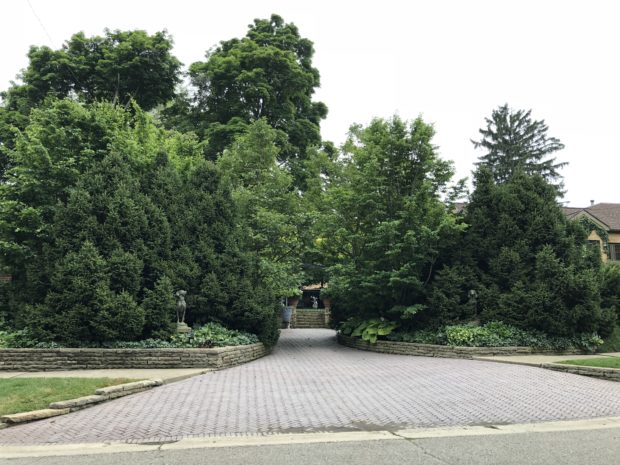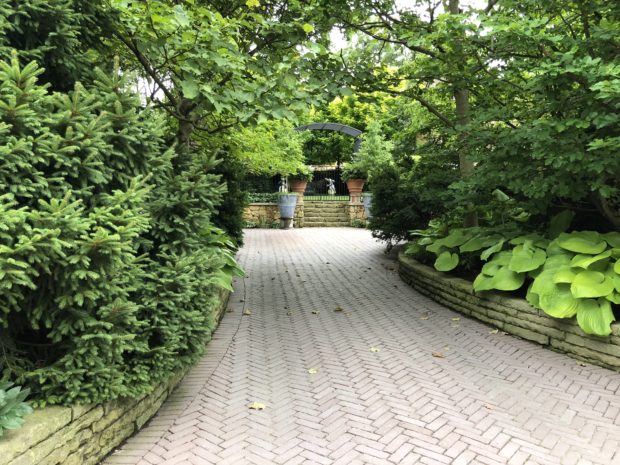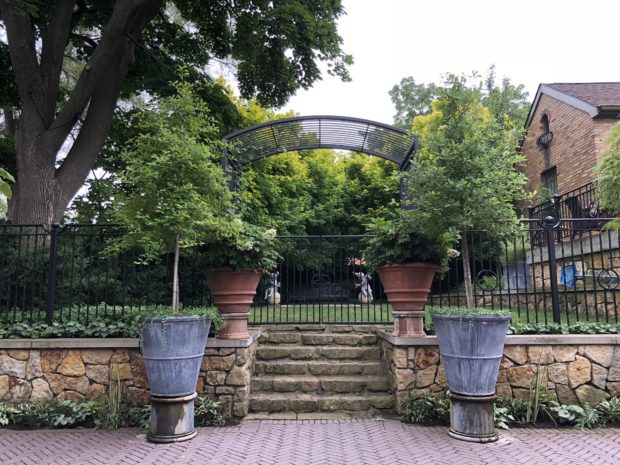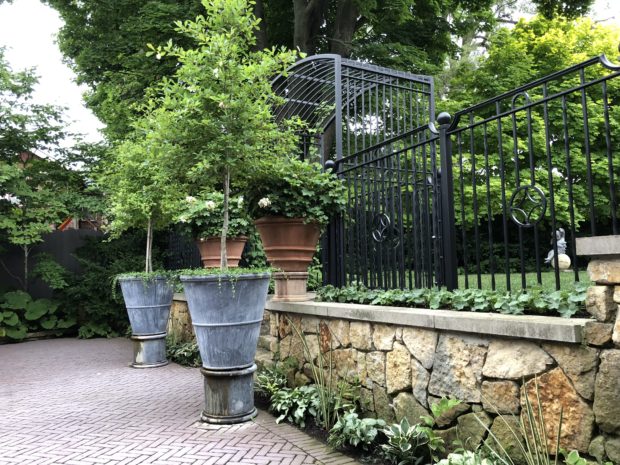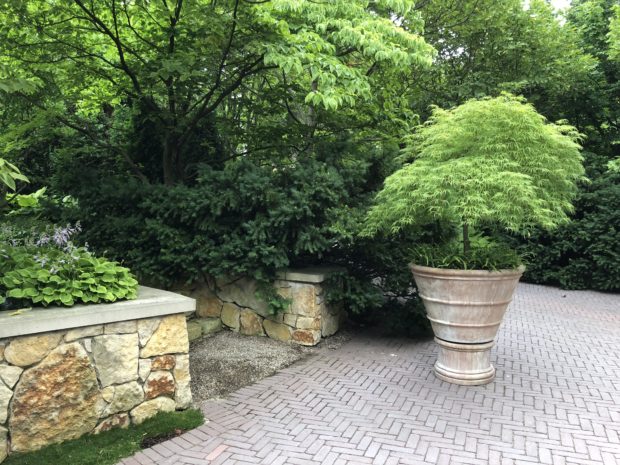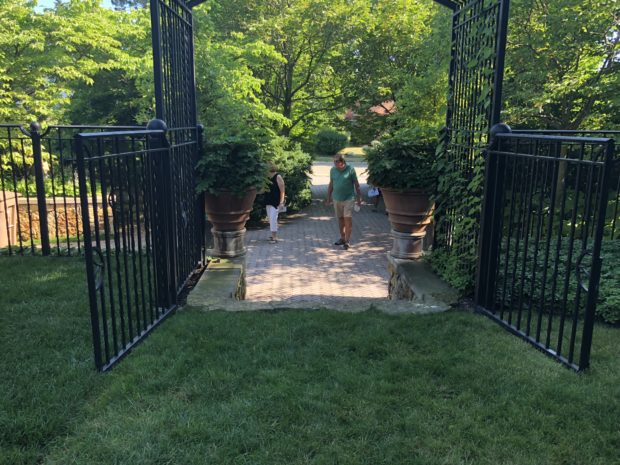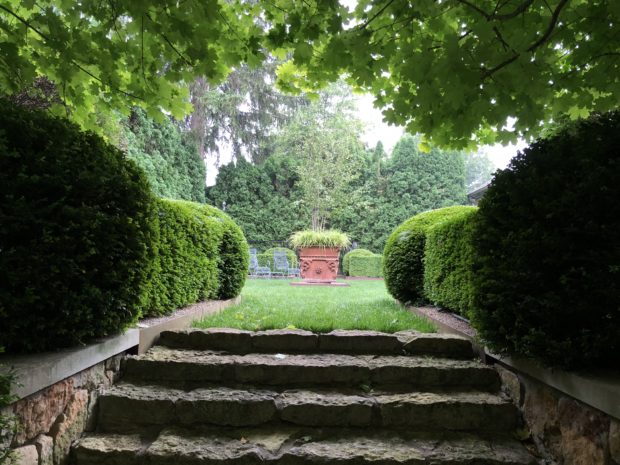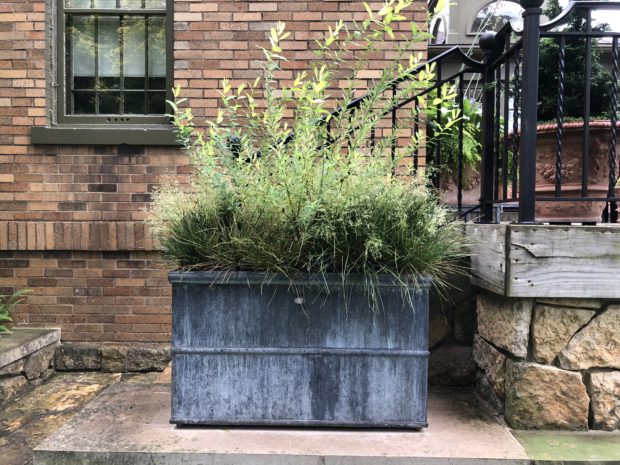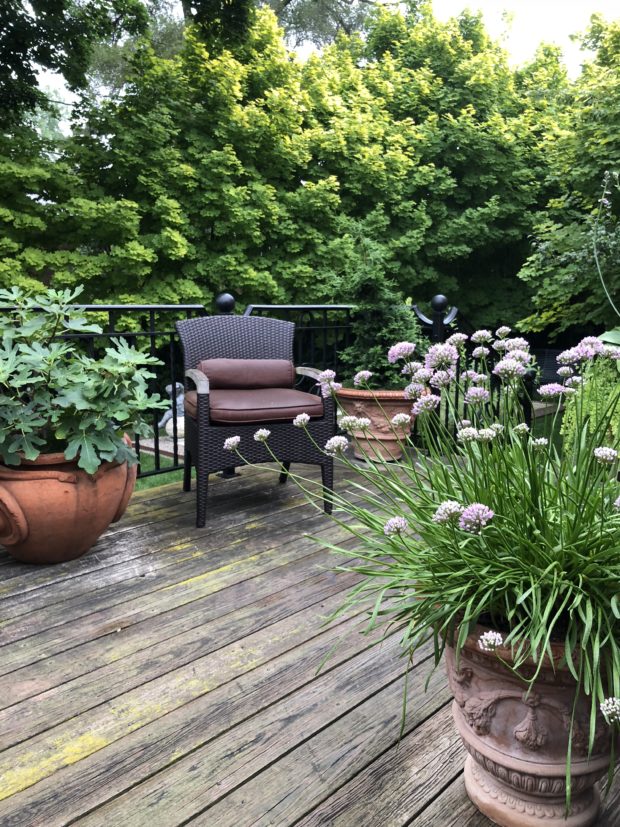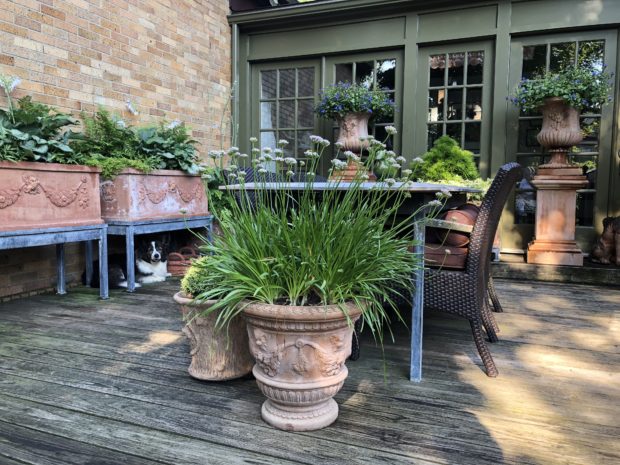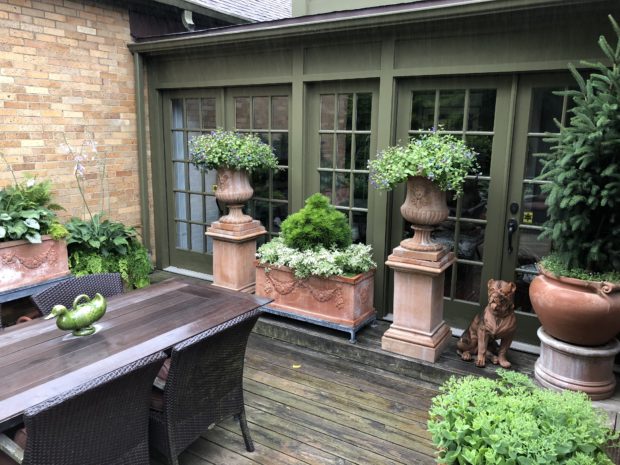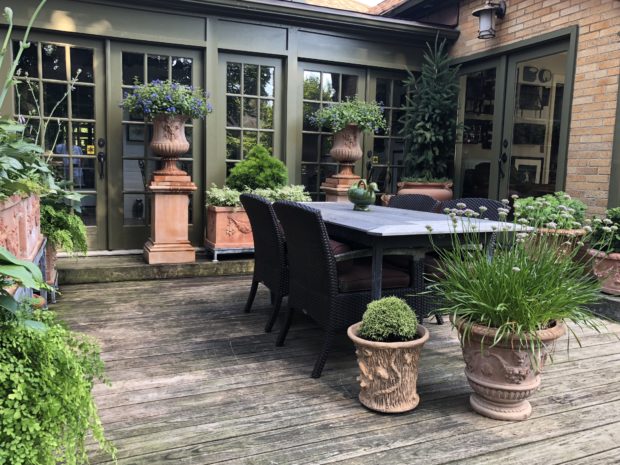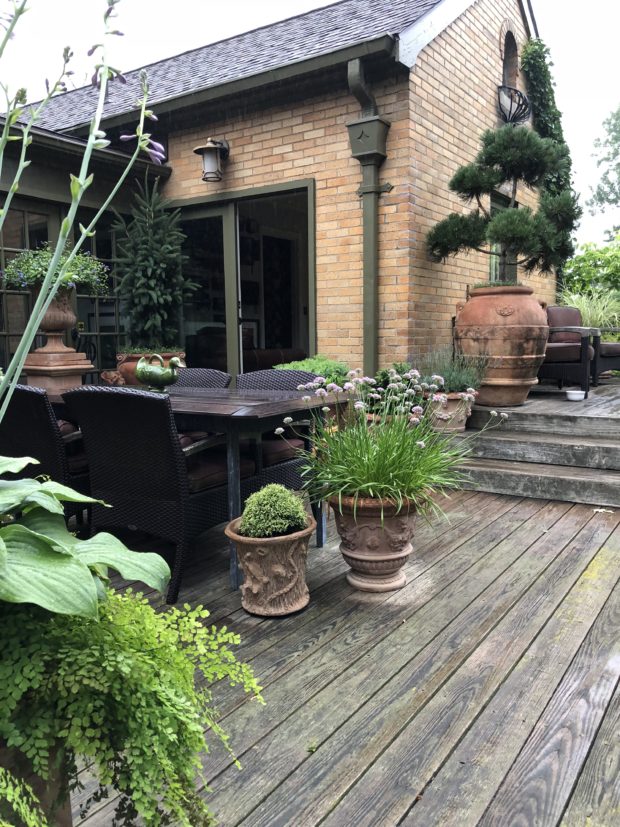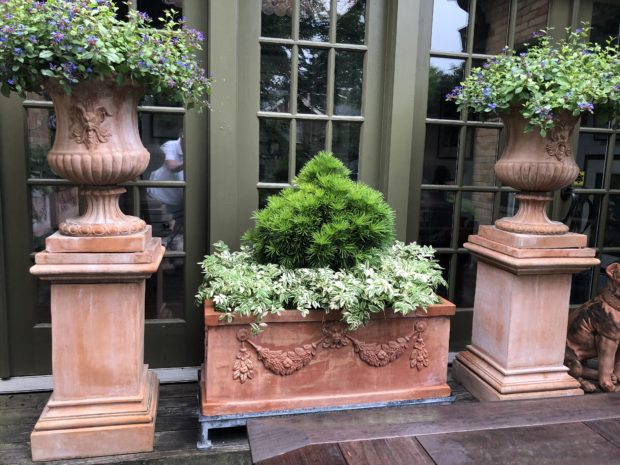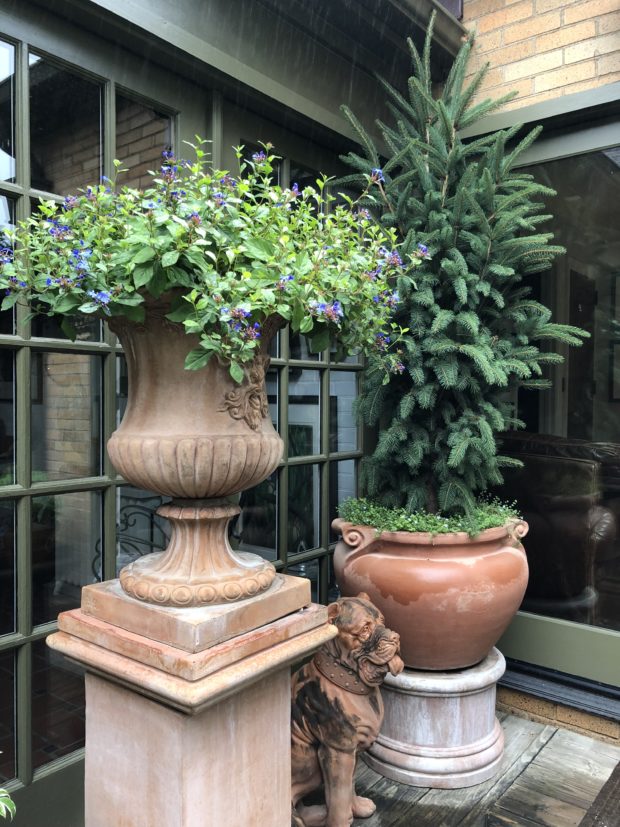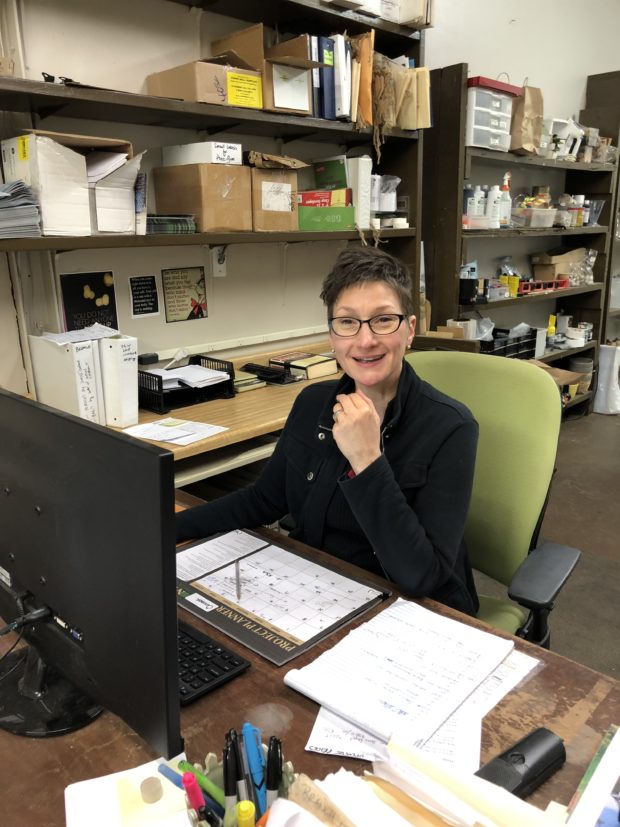 Jackie A is the outside sales manager for both Detroit Garden Works, and The Branch Studio. If you have ever inquired about getting a light hoop shipped out to you, or a custom pergola built, you have probably had occasion to talk with her. A talented landscape designer in her own right, she has a particular interest in sourcing and placing fine objects for the garden and landscape. In addition to handling a steady stream of sales and arranging for shipping for those sold items all over the US, she is currently managing the payments, collections and shipping to the US of several containers packed with goods purchased by Rob in Belgium, Germany, France and England during his September buying trip for the spring of 2019. She is a very capable member of our staff, and we are lucky to have her representing us.
Jackie A is the outside sales manager for both Detroit Garden Works, and The Branch Studio. If you have ever inquired about getting a light hoop shipped out to you, or a custom pergola built, you have probably had occasion to talk with her. A talented landscape designer in her own right, she has a particular interest in sourcing and placing fine objects for the garden and landscape. In addition to handling a steady stream of sales and arranging for shipping for those sold items all over the US, she is currently managing the payments, collections and shipping to the US of several containers packed with goods purchased by Rob in Belgium, Germany, France and England during his September buying trip for the spring of 2019. She is a very capable member of our staff, and we are lucky to have her representing us.  We made a decision some time ago to exhibit at the ASLA 2018 trade show, which closed yesterday in Philadelphia. The American Society of Landscape Architects sponsors a yearly meeting for members which includes seminars and tours of interest, and a trade show. Branch is one of 350 exhibitors at this show. It is worthwhile to take Branch products on the road, so designers can get a look at them in person. Pictures don’t tell the whole story. There is something about being able to see the design, material, construction and finishing up close.
We made a decision some time ago to exhibit at the ASLA 2018 trade show, which closed yesterday in Philadelphia. The American Society of Landscape Architects sponsors a yearly meeting for members which includes seminars and tours of interest, and a trade show. Branch is one of 350 exhibitors at this show. It is worthwhile to take Branch products on the road, so designers can get a look at them in person. Pictures don’t tell the whole story. There is something about being able to see the design, material, construction and finishing up close.
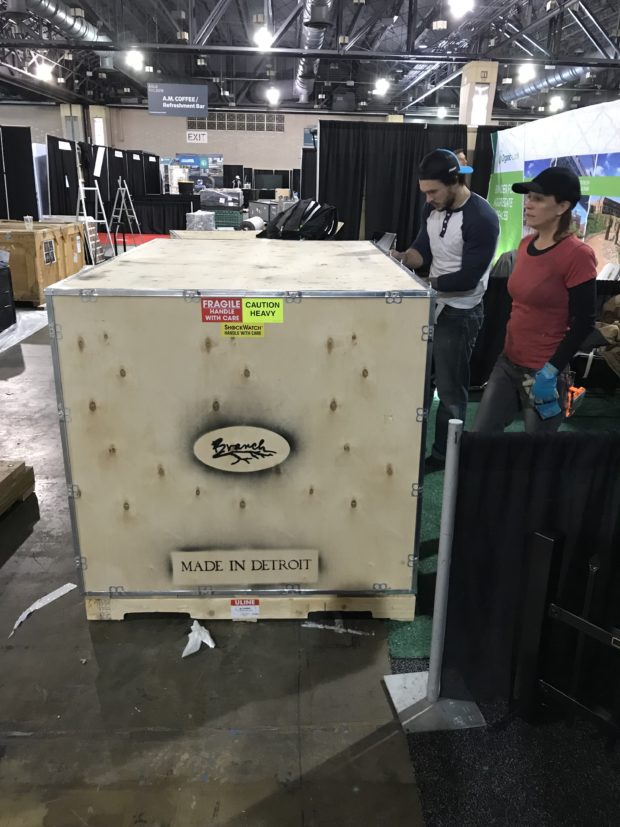 Jackie planned every detail of the trip, from deciding what objects she wanted shipped out to Philadelphia, and how she would arrange them, to a lighting scheme for the booth. As she and David would fly out, a computer loaded with a slide presentation featuring custom work previously fabricated at Branch, catalogues and brochures would also have to be shipped. She gave herself several months to pull it all together. As she is meticulous in her attention to detail, everything arrived as scheduled. As is typical for most convention centers, the uncrating and set up was done by Pennsylvania Convention Center staffers.
Jackie planned every detail of the trip, from deciding what objects she wanted shipped out to Philadelphia, and how she would arrange them, to a lighting scheme for the booth. As she and David would fly out, a computer loaded with a slide presentation featuring custom work previously fabricated at Branch, catalogues and brochures would also have to be shipped. She gave herself several months to pull it all together. As she is meticulous in her attention to detail, everything arrived as scheduled. As is typical for most convention centers, the uncrating and set up was done by Pennsylvania Convention Center staffers.  I was especially pleased about Jackie’s decision to take a fountain to the show. I am sure there was plenty involved in putting a working fountain on display. It had to be reviewed and approved by the convention venue. Planning the electrical was an issue. It was a very good idea, to include a fountain in our display. Branch manufactures a number of styles of fountains. They come equipped with a pump, so once the fountain is leveled and filled with water, one only has to plug it in to enjoy it. In recent years Branch has started fabricating covers for the pumps, so the interior of the fountain is as finished and polished as the exterior. Branch fountains are substantial, and can make a big statement in a landscape or garden. Our fountains are not inexpensive, but clients see the value of them. The action and sound of water in a garden cannot be overestimated.
I was especially pleased about Jackie’s decision to take a fountain to the show. I am sure there was plenty involved in putting a working fountain on display. It had to be reviewed and approved by the convention venue. Planning the electrical was an issue. It was a very good idea, to include a fountain in our display. Branch manufactures a number of styles of fountains. They come equipped with a pump, so once the fountain is leveled and filled with water, one only has to plug it in to enjoy it. In recent years Branch has started fabricating covers for the pumps, so the interior of the fountain is as finished and polished as the exterior. Branch fountains are substantial, and can make a big statement in a landscape or garden. Our fountains are not inexpensive, but clients see the value of them. The action and sound of water in a garden cannot be overestimated.
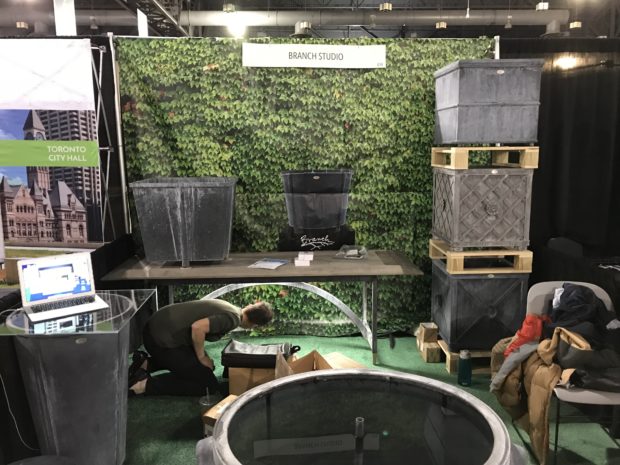 Once all of the major pieces were unpacked, Jackie and David were able to fine tune the display. A bank of LED lights was attached to the underside of the Stuart dining table. That light made it easy to see the steel base and Ipe feet. The boxes of Branch catalogues, brochures and cards all needed a place to be. Jackie did a great job of designing this small space. She made sure there was plenty of space for people to linger, and engage. Our galvanized steel containers, pergolas, fountains and ornament are unique in the garden ornament business. I am not aware of any other company that hand manufactures heavy gauge steel planter boxes, pergolas or fountains such as these. Each piece is painstakingly finished in a two step process involving commercial hot dip galvanizing in a molten zinc bath – with a lifetime of service in mind. Our steel ornament is weatherproof, and virtually rust proof. A little spot of rust where the galvanizing did not take can be put to bed with a dot of cold galvanizing compound. The design and manufacture of fine ornament for the garden was a dream of mine that the Branch Studio has fulfilled, one beautiful garden heirloom at a time. Not familiar with what we make at Branch? the Branch Studio
Once all of the major pieces were unpacked, Jackie and David were able to fine tune the display. A bank of LED lights was attached to the underside of the Stuart dining table. That light made it easy to see the steel base and Ipe feet. The boxes of Branch catalogues, brochures and cards all needed a place to be. Jackie did a great job of designing this small space. She made sure there was plenty of space for people to linger, and engage. Our galvanized steel containers, pergolas, fountains and ornament are unique in the garden ornament business. I am not aware of any other company that hand manufactures heavy gauge steel planter boxes, pergolas or fountains such as these. Each piece is painstakingly finished in a two step process involving commercial hot dip galvanizing in a molten zinc bath – with a lifetime of service in mind. Our steel ornament is weatherproof, and virtually rust proof. A little spot of rust where the galvanizing did not take can be put to bed with a dot of cold galvanizing compound. The design and manufacture of fine ornament for the garden was a dream of mine that the Branch Studio has fulfilled, one beautiful garden heirloom at a time. Not familiar with what we make at Branch? the Branch Studio
 By Friday afternoon, our Philadelphia popup shop was ready for company. This is the fourth time we have exhibited at the ASLA show, and if the previous shows are any indication, it will take some time before we see inquiries. It can take a while before the right project comes along that would ask for our boxes or ornament. Designers have a lot of questions. Jackie was prepared with lots of answers.
By Friday afternoon, our Philadelphia popup shop was ready for company. This is the fourth time we have exhibited at the ASLA show, and if the previous shows are any indication, it will take some time before we see inquiries. It can take a while before the right project comes along that would ask for our boxes or ornament. Designers have a lot of questions. Jackie was prepared with lots of answers.
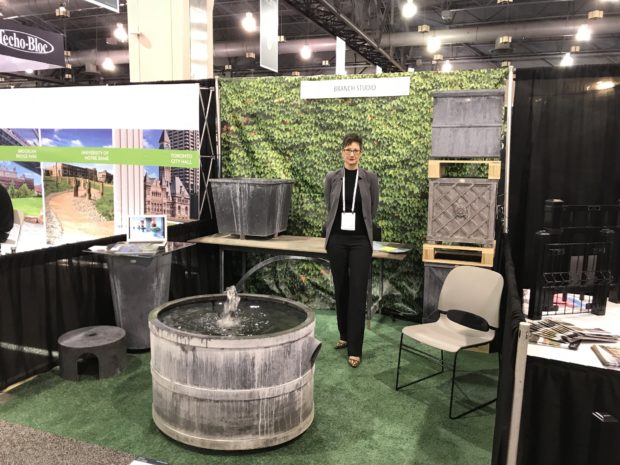 Exhibiting on a national stage at a trade show attended by landscape architects was a meeting I welcomed. Branch is a grown up company, just barely hitting its stride. Ornament in the garden can endow a landscape with atmosphere. The Branch finish is very reminiscent of the look of that classic garden material, lead. Each Branch box comes with a reference to the history of garden pots, standard issue. That said, we have shipped out Branch products in their galvanized state, for those clients who favor the more contemporary finish that the powder coating process offers.
Exhibiting on a national stage at a trade show attended by landscape architects was a meeting I welcomed. Branch is a grown up company, just barely hitting its stride. Ornament in the garden can endow a landscape with atmosphere. The Branch finish is very reminiscent of the look of that classic garden material, lead. Each Branch box comes with a reference to the history of garden pots, standard issue. That said, we have shipped out Branch products in their galvanized state, for those clients who favor the more contemporary finish that the powder coating process offers.
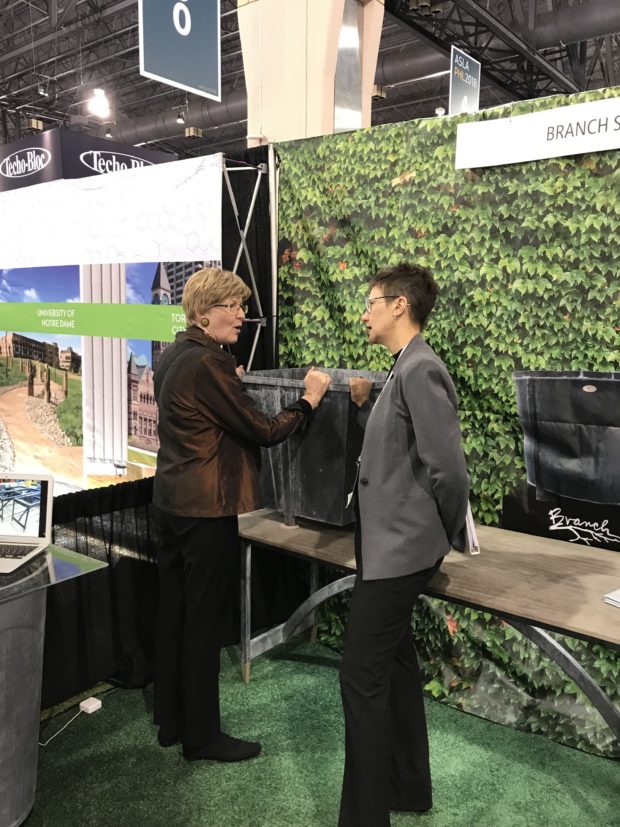 By no means is Branch an overnight sensation. We have 15 years behind us. 15 years getting our process, and our product line in order. This year, our lead times on custom orders have been at times 12 to 16 weeks out. Would that we could fill custom orders faster, but we work one project at a time. Branch Studio is busy. I am so happy about that. As for our pop up shop in Philadelphia, I thank both Jackie and David for their work putting the Branch Studio on the road. They will be packing up this morning, and heading home tomorrow.
By no means is Branch an overnight sensation. We have 15 years behind us. 15 years getting our process, and our product line in order. This year, our lead times on custom orders have been at times 12 to 16 weeks out. Would that we could fill custom orders faster, but we work one project at a time. Branch Studio is busy. I am so happy about that. As for our pop up shop in Philadelphia, I thank both Jackie and David for their work putting the Branch Studio on the road. They will be packing up this morning, and heading home tomorrow.
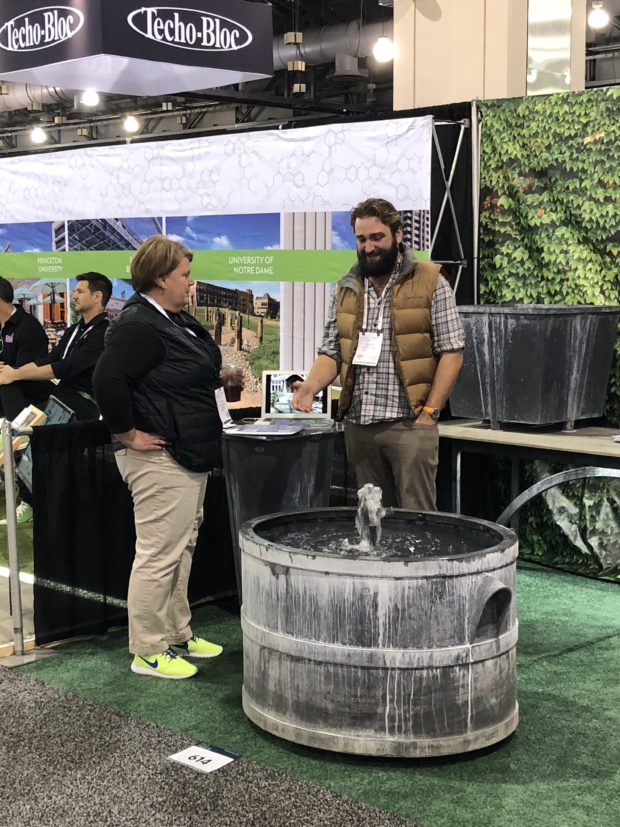 And of course, many thanks to all of those people who have both expressed interest in the work, and spoken for it.
And of course, many thanks to all of those people who have both expressed interest in the work, and spoken for it.
